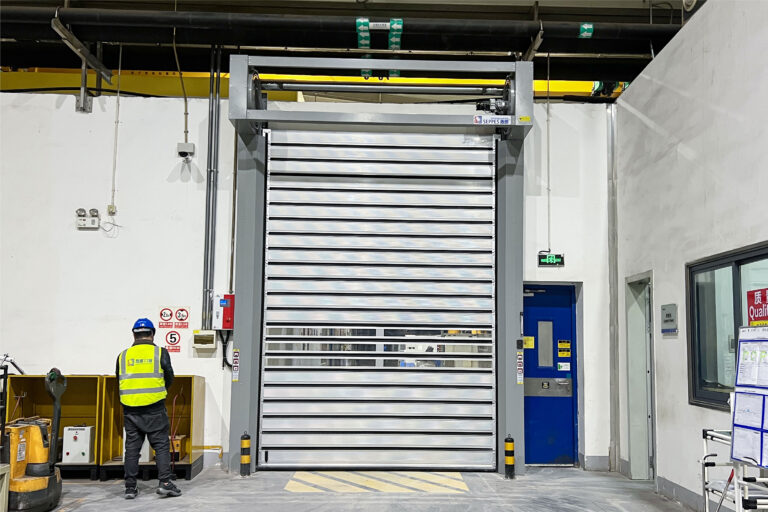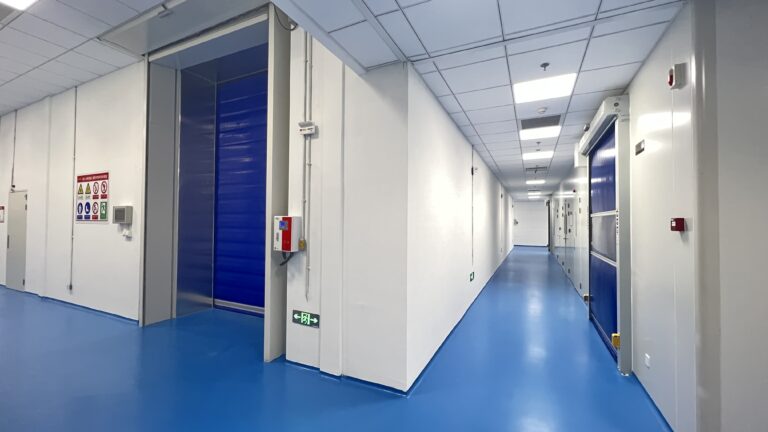Why does the Norwegian market have a special need for industrial doors?
As an important industrial economy in Northern Europe, Norway has been developing steadily in oil and gas, shipping, cold chain fishery, shipbuilding industry, and clean energy construction, with infrastructure all over the coastal port area and the inland mountainous area. With the government’s emphasis on energy efficiency, environmental protection, safety compliance, and automated factory upgrades, companies are placing higher demands on industrial door products.
Choosing a Norwegian industrial door that is adapted to the Norwegian environment and meets project standards is not only related to operational efficiency, but also has a direct impact on building energy efficiency and operational safety.
Norway Industrial Doors Market Characterization by 2025
Wide range of application industries: covering shipbuilding, energy (wind power, hydropower), logistics, cold chain, fisheries, ports & minerals, etc.
Significant environmental challenges: most projects operate in environments below 0°C, with winter temperatures as low as -30°C, and must be frost-resistant.
Stringent building standards: industrial doors need to meet a number of certifications such as CE, EN13241 and ISO9001.
Limited local manufacturing resources: most high-performance industrial doors are imported, and the supply chain needs to match customized demand and standardized delivery.
Mainstream industrial door types and application scenarios in Norway
Insulated Sectional Door
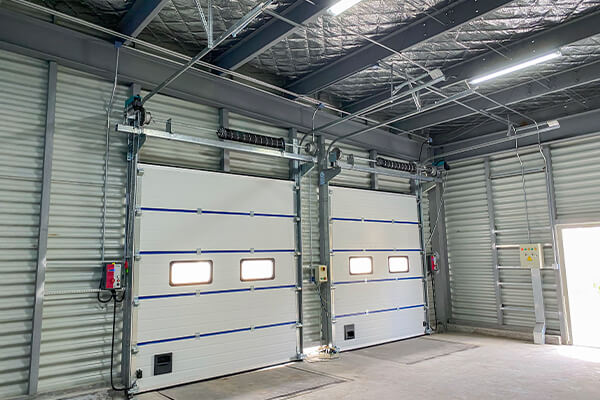
Applicable scenes: cold storage warehouse, fishing port, power station
Adopting double-layer color steel plate or aluminum plate + high-density PU filling, thickness 40mm-50mm, with excellent thermal insulation and airtightness. Adapted with track heating and low temperature motor, suitable for -40℃ working environment.
High-Speed Spiral Door
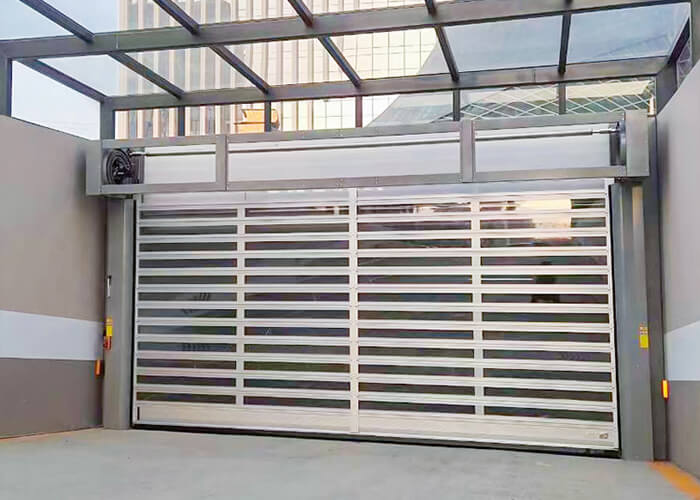
Applicable scenes: high-frequency logistics, garage, equipment manufacturing plant
Adopting 0.7mm aluminum alloy plate + foam middle layer with DSP servo system, the opening speed can reach 1.5m/s, wind resistance up to grade 12, beautiful structure, excellent sealing, suitable for intelligent entrance and exit control.
High-speed rolling door
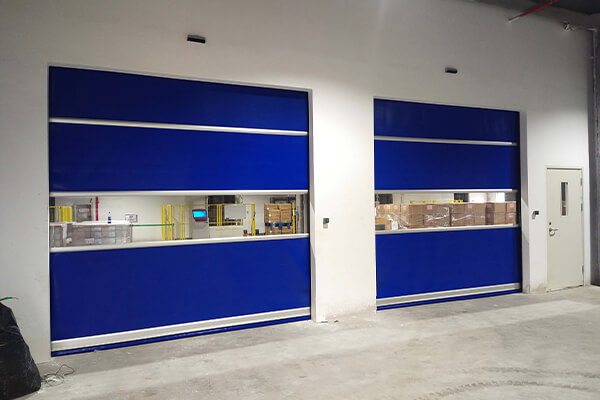
Applicable scenes: food factory, cleaning area, workshop partition
Flexible door curtain, open quickly, suitable for radar, photoelectricity, access control and other systems control, with sealing brush strips and optional thermal insulation curtain cloth, suitable for medium temperature areas and clean space.
Fire-Rated Industrial Door
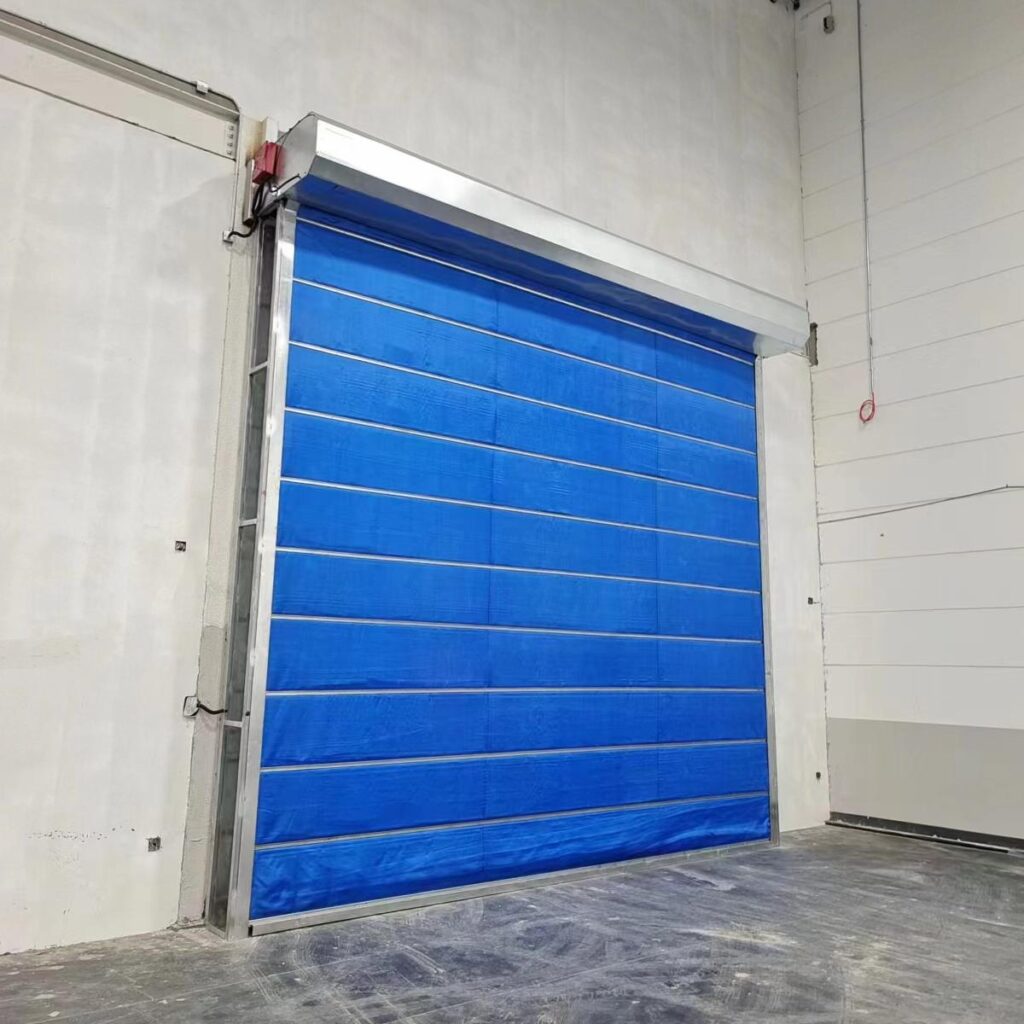
Applicable scenes: oil and gas, power distribution room, storage hazardous area.
Fire-resistant for 60-120 minutes, with fire-fighting linkage device, in accordance with EN 1634 standard, suitable for industrial facilities with strict fire-fighting requirements.
High-Speed Zipper Door
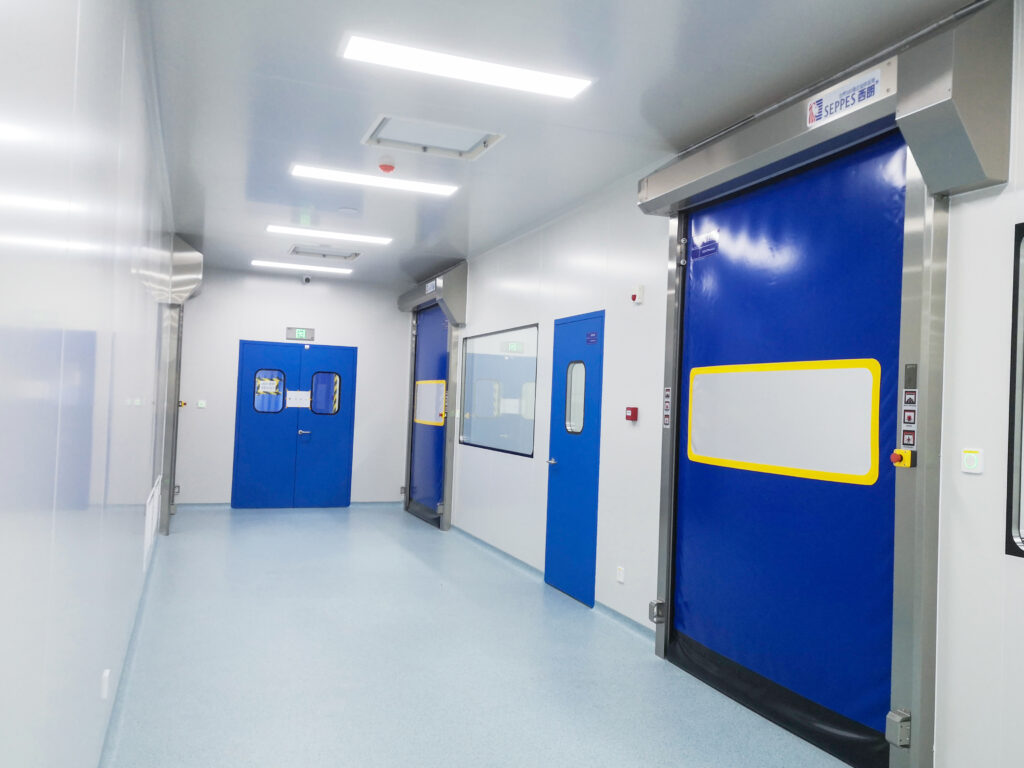
Scenarios: clean rooms, robotic workspaces, forklift lanes.
PVC curtain body with automatic reset function on impact, running life of more than a million times, suitable for high-frequency operation, with sealed guide rail and high-frequency response control system.
Table overview: Comparison of leading industrial door types and technical parameters in the Norwegian market
| Industrial Door Types | Recommended Scenarios | Core Advantages | Opening and closing speed | Wind resistance | Operating Temperature Range |
| Insulated Sectional door | Cold chain, energy, ports | High insulation, sealed, can be equipped with rail heating | 0.2-0.3m/s | ≤10 | -40°C ~ +50°C |
| Spiral Rapid Door | Assembly plants, garage entrances and exits | High speed, wind resistant, modern appearance | 1.0-1.5m/s | ≤12 | -30°C ~ +50°C |
| High-speed rolling door | Food factories, workshop partitions | Fast opening and closing, easy to clean, low cost | 0.8-1.5m/s | ≤6 | -10°C ~ +40°C |
| Fireproof industrial door | Hazardous area, power station distribution room | Fire-resistant 60-120min, support fire linkage | ≤0.3m/s | ≤8 | 0°C ~ +60°C |
| Self-repairing zipper door | Intelligent workshop, clean zone | Automatic reset, anti-collision design, high sealing performance | Up to 2.0m/s | ≤8 | -10°C ~ +50°C |
Key considerations for industrial doors in Norwegian procurement
| Purchasing Dimension | Recommended selection strategy |
| Frost Resistance | Equipped with heated tracks, low-temperature motors, and anti-condensation devices |
| Wind Pressure and Air Tightness | Use of reinforced wind braces, choice of door type with four-layer sealing design |
| Energy efficiency | U-value ≤ 1.3 W/m²-K, complying with Norwegian energy-saving regulations |
| Control System | Recommended servo system + PLC control + radar sensor switch |
| Installation and after-sales service | Choose the export-oriented manufacturer that provides remote installation guidance and three-language file support |
Technical highlights of SEPPES industrial door solutions
High thermal insulation: PU filling density up to 50 kg/m³, door thickness 40 mm, airtightness value 8.68 m³/(㎡-h), in line with international level 3 standards.
High wind resistance: reinforced aluminum alloy door body, wind pressure resistance up to 32m/s (level 12)
Intelligent control: DSP chip control servo system, support remote linkage, access control management, emergency power failure response.
Safety protection: standard infrared photoelectric + airbag bottom edge, optional laser anti-collision, full curtain light curtain.
Conclusion: New value options for industrial doors for future Norwegian projects
From Arctic cold chain centers to coastal ports, from oil bases to automated production lines, Norwegian companies require industrial doors that go beyond the traditional “opening and closing controls”. It is a systematic tool for energy management and security.
Choosing a high-performance, certified and climate-ready Norwegian industrial door is an essential part of every project, from the drawing board to the ground.
SEPPES provides professional and customized services, supporting technical output, packaging and cross-border logistics coordination, helping you to meet the needs of Norwegian industrial projects with ease.
FAQ
Q: What kind of industrial doors can be used in Norway for the lowest winter temperatures?
A: It is recommended to use insulated liftgate or spiral doors, which can support -40°C operating conditions.
Q: Do industrial doors meet the Norwegian building certification?
A: The products support CE, EN 13241, ISO certificates, and meet the requirements for export to Norway.
Q: Does it support project customization and remote technical support?
A: Norwegian/English literature, remote installation video and engineer video guidance are available.


